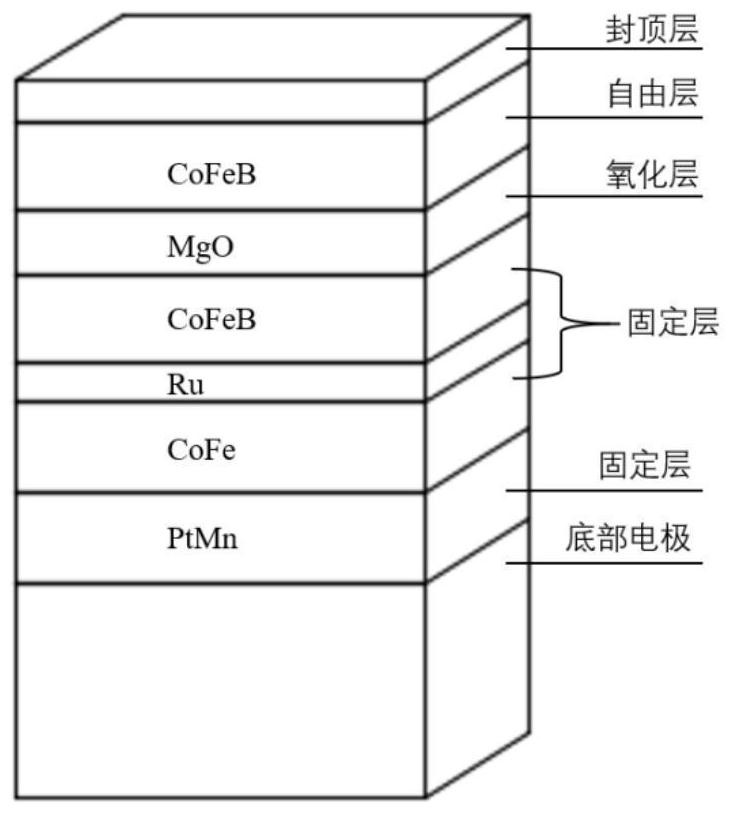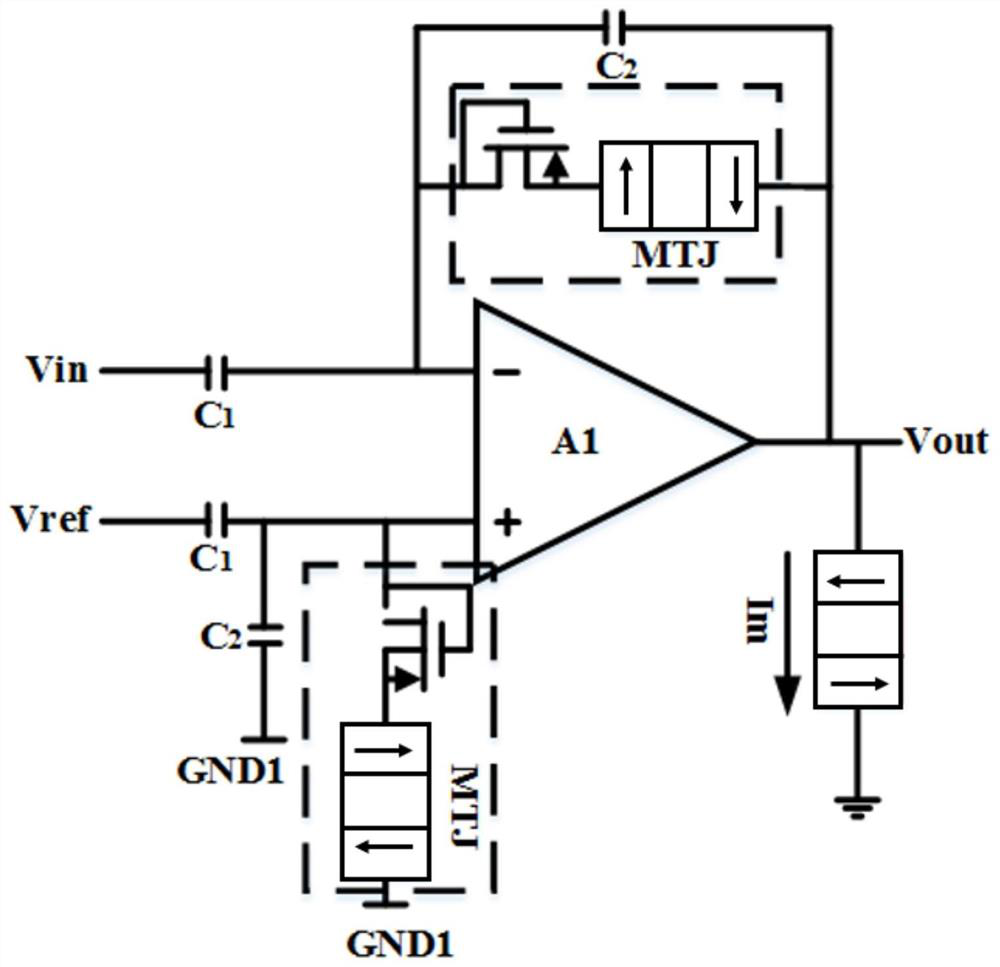Neural signal amplifier based on MTJ device
A neural signal and amplifier technology, applied in amplifiers, DC-coupled DC amplifiers, push-pull amplifiers, etc., can solve the problem that neural front-end amplifiers cannot effectively identify and amplify action potentials below 300Hz, and achieve the effect of reducing occupancy
- Summary
- Abstract
- Description
- Claims
- Application Information
AI Technical Summary
Problems solved by technology
Method used
Image
Examples
Embodiment 1
[0039] This embodiment provides a neural signal amplifier based on MTJ devices, such as image 3 As shown, including the internal operational amplifier and the amplifier feedback loop, the neural signal amplifier based on the MTJ device includes two amplifier feedback loops, both of which are composed of a pseudo-resistance RH and a capacitor C2, one of which is connected between the input and output of the negative terminal , and the other is connected between the positive input and ground.
[0040] Such as figure 2 As shown, the pseudo-resistor RH is composed of MTJ and MOS transistors, wherein the gate and drain of the MOS transistors are short-circuited, and the base and source are short-circuited.
[0041] The output terminal of the internal operational amplifier is a push-pull common-gate common-source structure composed of four PMOS transistors, and MTJ is connected to the output terminal of the amplifier as a parallel resistor.
[0042] The neural signal is input to t...
Embodiment 2
[0059] This embodiment provides a brain-computer interface system, including the neural signal amplifier based on the MTJ device described in Embodiment 1, a microelectrode and a band-pass filter. The amplifier in the existing brain-computer interface system is to be replaced with the neural signal amplifier based on the MTJ device described in the first embodiment, so as to selectively amplify the signal in the frequency band below 300 Hz according to its amplitude, that is, only Effectively identify and amplify high-pulse nerve action signals.
PUM
 Login to View More
Login to View More Abstract
Description
Claims
Application Information
 Login to View More
Login to View More - R&D
- Intellectual Property
- Life Sciences
- Materials
- Tech Scout
- Unparalleled Data Quality
- Higher Quality Content
- 60% Fewer Hallucinations
Browse by: Latest US Patents, China's latest patents, Technical Efficacy Thesaurus, Application Domain, Technology Topic, Popular Technical Reports.
© 2025 PatSnap. All rights reserved.Legal|Privacy policy|Modern Slavery Act Transparency Statement|Sitemap|About US| Contact US: help@patsnap.com



